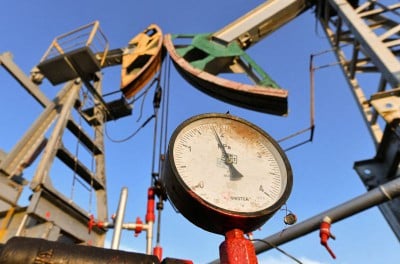
The United States of America, one of the world's largest economies, operates as a free market economy in consumer goods and business services. The government imposes regulations even in those areas to protect the good of all. It operates as a command economy in defense, some retirement benefits, medical care, and in other areas.
Fast Facts About the U.S. Economy
There are a few key components of the U.S. economy. These different economic indicators help us understand how the U.S. economy is doing.
- Gross domestic product (GDP): $25.66 trillion (nominal, third quarter of 2022)
- GDP growth rate: 2.6% (annualized rate, third quarter of 2022, first estimate)
- Real GDP per capita: $60,082 (third quarter of 2022)
- Gross national income: $23.4 trillion (2021)
- Unemployment rate: 3.7% (November 2022)
- Federal minimum wage: $7.25 per hour
- Currency: United States Dollar
- Euro-to-dollar conversion: Average of $1 (Sept. 2, 2022)
U.S. Economic Measurements and What They Mean
- Nominal GDP: This is an annualized figure showing a country's production level using current prices without compensating for inflation.
- Real GDP: This does the same, but it removes the effects of inflation. Economists use it to compare GDP over time.
- GDP growth rate: This ratio uses real GDP to calculate the growth rate compared to the previous quarter or year.
There are four components of GDP:
- Consumer spending: This component equals about 68.5% of the total amount.
- Business investment: This component includes manufacturing, real estate construction, and intellectual properties.
- Government spending: This includes federal, state, and local expenditures.
- Net exports: This includes exports that add to the nation's productivity and imports that subtract from it.
Major Influences on the U.S. Economy
The U.S. budget is total federal income and spending. The government receives most of its revenue from income taxes. Most of its spending goes toward three large expenses: Social Security benefits, military spending, and Medicare.
There's a budget deficit when spending is higher than revenue. The federal government has had a deficit every year since 1970 in all but four years: 1998 through 2001. Each year's deficit is added to the debt.
Note
The U.S. typically runs a trade deficit, too. This means that the nation imports more than it exports.
Debt-to-GDP Ratio
Economists have proposed that a developed country will enter a phase where each increase of one percentage point of debt decreases annual average real growth by .017 percentage points when a nation's debt-to-GDP grows to more than 77%. But a one percentage point increase in debt actually increases annual average real growth if a country manages to stay below that 77% debt-to-GDP threshold.
Durable Goods Orders
A critical measurement in the durable goods category is capital goods. That's the machinery and equipment that businesses need every day. They only order these items when they're sure the economy is improving.
The Federal Reserve
The Federal Reserve System is the nation's central bank. It can use many tools to change its stance on monetary policy. It focuses on the federal funds rate (FFR), interest rates, and open market operations:
- FFR: The Fed sets a target range for the federal funds rate, the upper and lower bounds of which are interest on reserve balances (IORB) and overnight reverse repurchase (ON RRP) agreements.
- Interest rates: Banks charge each other interest for loans that are made overnight. These rates are between the FFR target range. The interest rates influence the short-term interest rates that the banks charge other businesses and consumers.
- Open market operations: The Fed can buy and sell securities in the open market to influence long-term rates.
These tools allow the Fed to adjust interest rates and money supply without dictating how banks should conduct business.
The Fed exercises expansionary monetary policy by decreasing the target range for the federal funds rate (FFR). This speeds up growth and reduces unemployment by reducing the cost of borrowing money. The Fed will use a contractionary monetary policy if the economy grows too fast and increases inflation. It will raise the FFR target range to slow lending and spending, which slows demand.
Note
Read more about the most recent Federal Open Market Committee (FOMC) meeting and changes to the fed funds rate here.
The Federal Reserve's administered rates (the federal funds rate target range) influence businesses' and consumers' spending to keep the growth rate, inflation, and employment at healthy levels.
The Fed has three other functions. First, it supervises and regulates many of the nation’s banks. Second, it maintains financial market stability and works hard to prevent crises. Third, it provides banking services to other banks, the U.S. government, and to foreign banks.
Commodities Market
All these goods may exhibit a high degree of price volatility from time to time as a result. This can be further compounded by fluctuations in foreign exchange prices, which impact imports and exports.
Frequently Asked Questions (FAQs)
What kind of economy does the U.S. have?
How strong is the U.S. economy today?
While analysts don't always agree, many use the "gross domestic product" (GDP) to gauge the strength of an economy. You might use real GDP to compare national economies, or you might use GDP growth to compare a track nation's progress over time. The Federal Reserve publishes charts with both real GDP and real GDP growth data updated quarterly.






